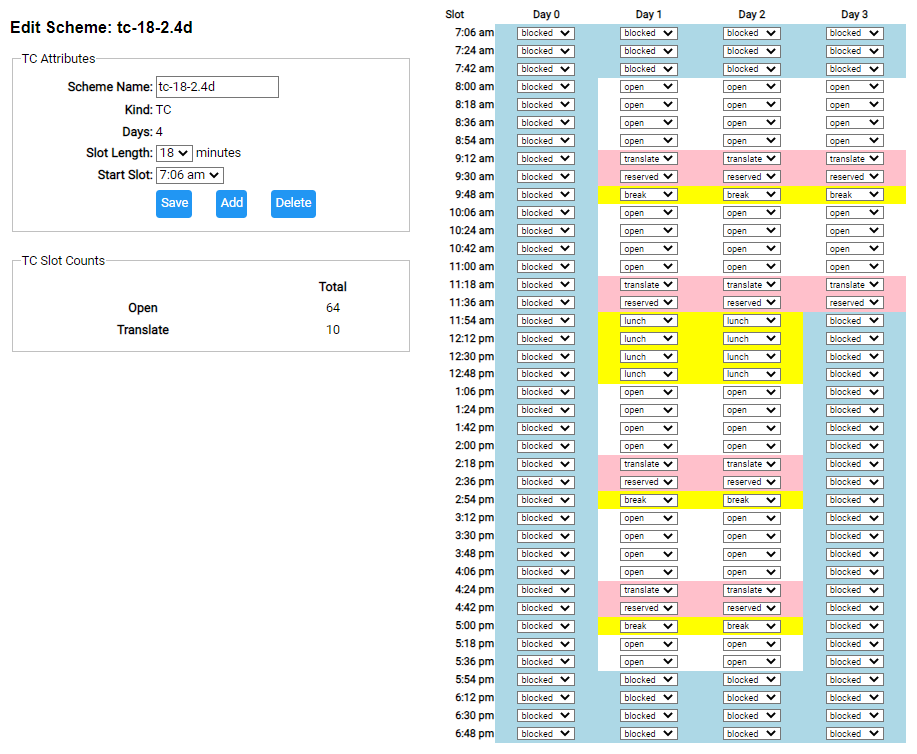Developing a Scheme
This topic describes a schedule scheme in more detail and some thoughts on creating a new scheme.
The purpose of a scheme is to create the basic structure for the schedule in a room at Global Finals (more here). We can see the properties of a scheme by examining the sample below (a screen shot of Edit Scheme).
We can start with the name tc-18-2.4d. By convention
- tc indicates it is for team challenge (tc has a blue background in the scheduler, ic orange)
- 18 indicates each slot in the schedule is 18 minutes
- 2.4 indicates the schedule covers roughly 2.4 days of competition
- d indicates this is a minimal contact scheme where IC is expected to follow shortly after TC
Start Slot indicates the earliest time that can be scheduled. The start of the day typically centers around 8:00am. Making the Start Slot a bit earlier allows adding extra slots in the AM if needed.
The table at the right describes each of the slots for this scheme. A slot can be:
- blocked: the scheduler is not to place a team here
- open: a team that does not require translation can be placed here
- translate: a team that requires translation can be placed here
- reserved: tc translated teams can require an extra slot to deal with the translation - tc schemes reserve the slot after a translated slot to deal with this
- break: a break or catch-up slot for the appraiser team (no team is scheduled here)
- lunch: designated lunch time (no team is scheduled here)
Note that each of these slots is a dropdown. You can change a slots type using the dropdown.
The TC Slot Counts area is sums the total number of open slots (eg open + reserved + translated) and the number of translate slots. T
Remember that a scheme is used to initialize rooms in the schedule (a TC scheme for TC, an IC scheme for IC). These individual room schedules can be edited as needed. This might be to open or block specific slots. So the scheme defined here is a starting point for all rooms of a particular kind (TC or IC).
